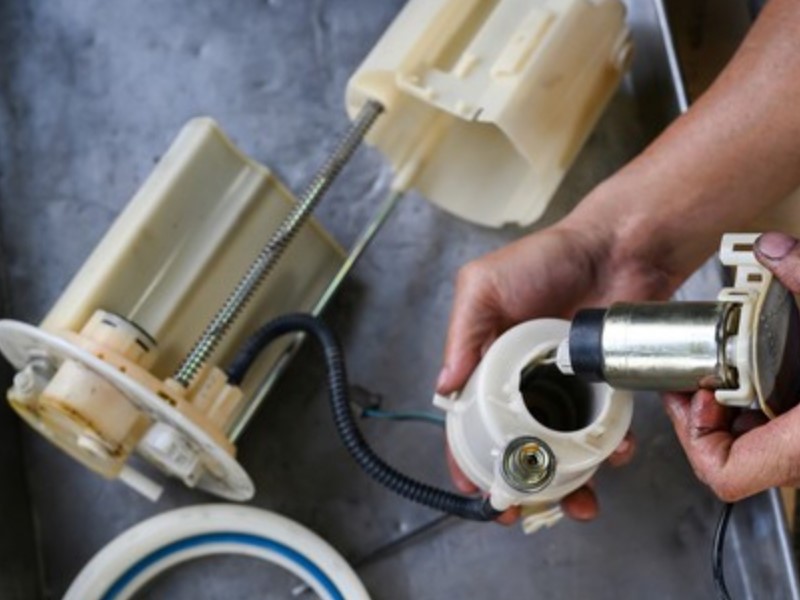What Happens When Your Fuel Pump Malfunctions?
Your car’s fuel pump does exactly what its name suggests. It is responsible for pumping the fuel from the gas tank of your vehicle to its engine to power it up.
Considering the critical role that fuel pumps play to make cars move, it is a part of your vehicle that you should be more familiar with. Please continue reading below to learn more about fuel pumps, what happens when they go out, and telltale signs of bad or faulty fuel pumps.
Table of Contents
The Main Role of Fuel Pumps
Today’s vehicles come with an internal combustion engine that features an electric fuel pump. Many cars are geared with an in-tank pump that is mounted inside the fuel tank. There are also some with an inline pump found between the engine and the gas tank.

By getting a good understanding of fuel pumps and how they work, it will be easier for you to learn what happens the moment they go out. It also allows you to determine when the problem is taking place.
- The fuel in the tank passes through the line that leads to the engine. In the case of electric fuel pumps, this is operated by a tiny motor drawing the fuel that sits in the gas tank up through the fuel line. Older vehicles that still feature mechanical fuel pumps have the pump moving as the camshaft spins and suction draws the fuel through a line.
- The fuel passes through the fuel line to the cylinder or carburetor. The fuel line goes straight to the cylinder or there is a pit stop somewhere else, depending on the engine makeup of your vehicle.
- Air gets injected into the fuel to form a mixture. Air and fuel don’t combine until they get to the cylinder in fuel-injected engines. Many vehicles today have fuel-injection systems. Fuel gets injected with air in carbureted engines, forming a mixture inside the carburetor. The mixture will go into the cylinder afterward.
- The fuel will combust to create energy. The piston compresses the ignited air and fuel mixture inside the cylinder. A spark plug creates a spark that ignites the mixture and fires the piston while the fuel mixture gets more compressed the piston moves.
- The crankshaft is now powered by released energy. You are now officially on the move. The fuel already moved your vehicle further down the road successfully and gets expelled in the form of exhaust after it completes its useful life.
This seemingly simple process with five steps has numerous other smaller steps that take place in between. However, all of these begin at the fuel pump. The second to fifth steps won’t take place when the fuel inside your tank fails to reach the engine where it was supposed to combine with air. As a result, you won’t make any progress down the road at all.
What Will Happen When Fuel Pumps Fail?
A failed or failing will cause drivability issues and major performance concerns with your car. If something is off with the fuel-to-air ratio and the cylinders don’t get sufficient fuel, the pistons won’t fire, and the engine will have a hard time moving your vehicle forward. It is not just about inefficiencies or lower gas mileage. Your car will never start in the first place if the fuel pump is already bad enough.

How long do fuel pumps last, then? Due to the critical role that they play in the overall function of your vehicle, fuel pumps are designed to be tough that let them endure and last for as long as your car’s lifetime. Most of the time, fuel pumps don’t need replacement until your vehicle reaches a minimum of 100,000 miles. Fuel pumps are even known to last for over 200,000 miles.
Telltale Signs of a Faulty Fuel Pump
It is important to bring your car for a checkup if it is starting to show the following symptoms of a bad fuel pump:
Your Car Dies or Sputters When Driving
You can tell right away that something is wrong if your vehicle dies while you are driving. If the engine stalls or sputters in the middle of your drive, the possible culprit is the fuel pump. The low pressure due to a faulty fuel pump implies that your engine doesn’t get the air and fuel mixture it needs to start combustion that will power your car. It might be especially obvious if your car is under stress or accelerates, such as when driving uphill or towing a heavy load.

Your Car Refuses to Start
When the car struggles to start or doesn’t start at all, chances are the fuel pump might be clogged or damaged. If the vehicle still cranks after you turn the key, but it still doesn’t start, it could be because the fuel doesn’t reach the engine. If the vehicle starts but needs more than the usual number of cranks required for turning over, the fault may also lie with the fuel pump.
Engine Surges During Your Drive
Another common sign of a faulty fuel pump is when the engine surges. It is the result of excessive fuel that reaches the engine. Once it happens, you will notice a surge in the engine. Your car will repeatedly pick up and drop speed even if you didn’t touch the brake or the gas.
Whining Sounds Come from the Backseat
Nope, those whines are not coming from kids. It is your fuel tank. When the fuel tank produces a low-grade whirring or whining noise, it is always a bad sign. When running normally, the fuel pump will only produce a low and almost unnoticeable humming sound. If there is a significant increase in the pitch, you might want to have an expert mechanic take a look at it.
Noticeably Lower Gas Mileage
Poor fuel efficiency is another common symptom of a faulty fuel pump. Worn or damaged components in fuel pumps will only cause the engine’s excess fuel to go to waste.










